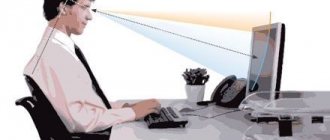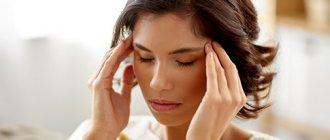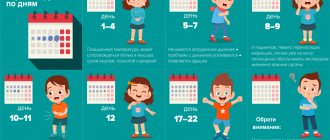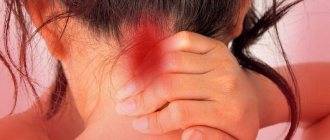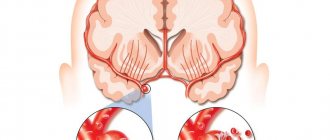Every person experiences headaches from time to time. It is associated with various external factors and goes away quickly without taking pills. 15% of people suffer from frequent, severe headaches. Doctors at the Yusupov Hospital conduct their examination using modern instrumental and laboratory diagnostic methods.
For headaches, people prescribe analgin, no-shpu, askofen, citramon. They relieve pain, but do not affect the cause of the pain. After determining the cause of the headache, doctors at the neurology clinic carry out complex therapy. Rehabilitation specialists use innovative non-drug treatments.
Professors and doctors of the highest category discuss complex cases at a meeting of the Expert Council. Leading specialists in the field of headache treatment collectively develop further tactics for patient management. Patients have the opportunity to undergo complex examinations and treatment at partner clinics of the Yusupov Hospital.
Top 9 drugs for headaches depending on its cause.
June 1, 2021
10825
3.3
1
Content
- Why does my head hurt?
- Groups of drugs for headaches
- Analgesics
- Antispasmodics
- Vasoconstrictor drugs
- Nonsteroidal anti-inflammatory drugs
- The most effective pills for headaches
- Aspirin
- Paracetamol
- Citramon
- Tempalgin
- Pentalgin
- Spazgan
- Nurofen
- No-Shpa
There is probably not a single person who has not experienced a headache at least once in his life. Moreover, this also applies to absolutely healthy people. Headache varies in severity, often impairing quality of life and reducing performance. Therefore, there are head pills in every home medicine cabinet.
But you need to understand that there is no universal remedy for headaches, because there are about 40 causes that cause them. And only a doctor can determine exactly why you have a headache. If you need to quickly relieve pain, we suggest you at least figure out which headache medication you need to take in a particular case.
Read also How to treat migraine: the best drugs Top 5 best drugs against migraine
Medicines for headaches by subgroups
The pharmaceutical industry offers several groups of medications that can alleviate the condition and cope with an attack of cephalalgia in the shortest possible time. Inexpensive, effective tablets for headaches can be purchased at any pharmacy; before purchasing, you need to familiarize yourself with their main characteristics.
Analgesic group
Medicines suppress pain without the effect of anesthesia. The drugs have a complex effect: they stop inflammatory processes, reduce body temperature and relieve pain. Analgesics do not combat the cause of cephalalgia and are not suitable for long-term use. An exception is tablets prescribed by a doctor for headaches - for cancer, migraines, etc.
Analgesic medications have an effect half an hour after administration, and the results last for up to 8 hours in a row. Instructions for medications warn that you should not mix several types of analgesics at the same time, so as not to provoke the development of adverse reactions. Before therapy, it is necessary to study the manufacturer's recommendations.
The list of non-narcotic analgesics is presented by derivatives:
- salicylic acid - Aspirin;
- aniline - Panadol, Paracetamol;
- alkanoic acids – Diclofenac, Ibuprofen;
- pyrazoline - Pentalgin, Dimexide.
Medicines are sold without a doctor's prescription.
Group of antispasmodics
The causes of cephalgia include problems with blood circulation in the brain tissue, caused by narrowing of the lumens of blood vessels. Attempting to apply ice to the problem area will worsen the condition, and taking analgesics will not have the expected result.
Antispasmodics help restore local blood circulation, but are used for one-time rather than continuous therapy. The list of headache pills is presented in two subgroups:
- Myotropic - medications are prescribed for high blood pressure. The active components of the drugs relieve spasms of smooth muscles, which allows you to expand the lumens of blood vessels. Individual members of the group have a secondary sedative effect. Treatment is carried out with Dibazol, Papaverine, No-Shpa, Dexalgin, etc.
- Neurotropic - the component composition blocks nerve impulses, relieves spasms and restores blood circulation while suppressing painful sensations. Separate tablets for headaches are allowed for pregnant women. Therapy is carried out with Aprofen, Buscopan, Hyoscine, etc.
Unstable blood circulation in the brain requires serious attention. Medicines must be prescribed by your doctor and taken strictly according to instructions.
Group of vasoconstrictor medications
Headache medications help cope with pathological vasodilation, which causes congestion and discomfort. Capillary tone is improved by caffeine, triptan, ergotamine and other components included in the tablets.
Therapeutic procedures are carried out with Caffetamine, Minegrol, etc. Most vasoconstrictor drugs require a doctor's prescription and are prescribed only after a diagnostic examination and confirmation of the diagnosis.
NVPS Group
The tablets help to cope not only with headaches, but also to lower the temperature and suppress the inflammatory process. Treatment is carried out for colds, fevers and other pathologies that provoke the appearance of cephalgia. The effect after administration occurs quickly and lasts for several hours.
The NVPS subgroup is divided into two types:
- with weak effectiveness - the list is presented by paracetamol, Analgin, Panadol, Tempalgin, Baralgin, Sedalgin;
- with a strong effect - therapy is carried out with Aspirin, Diclofenac, Indomethacin, Ibuprofen, Ketoprofen, etc.
Headache tablets are available without a prescription but require caution when used.
Why does my head hurt?
The characteristics of headaches can vary in intensity, location, nature of pain, duration, etc. Among the causes of headaches
such:
- osteochondrosis of the cervical spine or cerebral vascular spasms;
- migraine, vascular problems, otitis media, glaucoma and other problems can be suspected by a throbbing headache;
- if the headache lasts for a long time, meningitis, encephalitis, tuberculosis and serious damage to the nervous system are possible.
Regarding the location of the headache,
then it is also different for each problem:
- forehead and eyebrow area: migraine, some eye diseases, inflammation of the sinuses, pneumonia;
- occipital region: neuralgia of the occipital nerve, spasm of the muscles of the head and neck, osteochondrosis, hypertension;
- forehead and temples: sinusitis, pneumonia, sore throat, flu, increased intracranial pressure;
- parietal region: migraine, muscle spasms of the head and neck, tumor processes.
In addition to various diseases, headaches can be caused by weather dependence, stressful situations, lack of sleep, and bad habits. In women, headaches often depend on the menstrual cycle. Men usually have headaches due to overwork, childhood headaches are associated with ARVI, and in old age headaches are caused by problems with the heart and blood vessels.
In any case, uncontrolled use of medications is unacceptable for headaches. If you have frequent headaches, be sure to consult a doctor and get tested to determine the cause.
Treatment of tension headaches: from old myths to modern concepts
Firstly, against the backdrop of a high need for specialized medical care, its low availability and poor awareness of the population are noted. According to an online survey of patients, more than half of the respondents (52.2%) noted constant or recurrent headaches, which significantly reduced the quality of life, but only half had consulted or were planning to consult a doctor [6]. Among the main reasons for refusing to seek medical help for headaches were: distrust of doctors and the quality of medical care (81.6%), inaccessibility of headache specialists (lack of specialists, the need to stand in line or pay for a consultation - 59.7% ).
Secondly, the problems of correct diagnosis and effective management of patients with primary headaches (migraine, tension-type headache) are still relevant. The results of a survey of doctors conducted in 2014 show that more than half of the specialists (52%) do not use the International Classification of Headaches II or III revisions (ICHD-III, 2013) in their practice. At the same time, the overwhelming majority of doctors (96%) indicate the relevance in Russia of the problem of incorrect diagnosis and treatment of patients with primary headaches. In turn, refusal to use ICHB leads not only to the formulation of deliberately incorrect “mythical” diagnoses for patients with tension-type headache or migraine (for example, discirculatory encephalopathy, vegetative-vascular dystonia, osteochondrosis of the cervical spine), but also to the prescription of ineffective therapy (nootropics, vitamin therapy, vasoactive drugs) [7]. And this, in turn, only strengthens patients’ mistrust of doctors and the ability to effectively treat headaches.
The problem of abuse of analgesics for headaches is especially relevant in Russia. The free over-the-counter availability of analgesics and uncontrolled use lead to a high (up to 4%) prevalence of drug-induced headache (DIH) [8]. Data from a survey of doctors we conducted show that specialists themselves often (40%) recommend using, for example, for tension-type headaches, combined analgesics, which, according to international recommendations and standards, are not the drugs of choice for tension-type headaches.
Based on the survey results, several initial steps can be proposed to optimize specialized care for patients with headaches:
1. Use ICHD-III criteria (2013) to diagnose forms of headaches.
2. When managing patients with the most common forms of primary headaches, be guided by European guidelines and standards, which will be discussed in detail below.
3. If there are difficulties in diagnosis and therapy, refer patients to specialized centers for the treatment of headaches.
HDN is one of the most common diseases among all population groups and ranks second in prevalence after caries. More than 1.5 billion people periodically experience tension-type headaches [1]. TTH occurs several times during the month in 24–37% of the population, about 10% have weekly episodes of TTH, while 2–3% of the population suffer from chronic TTH (CHTH) [2]. Such a high prevalence of HDN determines a heavy socio-economic burden on healthcare and society as a whole. According to many authors, the socio-economic damage from tension headaches is higher than that associated with migraine [3]. In one of the population studies, it was found that patients with episodic tension-type headache (ETTH) do not go to work on average 9 days a year due to headache and for another 5 days have a pronounced decrease in work capacity, while for chronic tension-type headache these figures reach: 27 days of missed work and 20 days of reduced performance [4]. Particularly pronounced impairment of activity and maladaptation are observed in patients with frequent and chronic forms of tension-type headache in combination with comorbid disorders: depression, sleep disorders, anxiety and somatization disorders [5].
Classification of HDN
According to the International Classification of Headaches, III Revision (ICHD-III, 2013), depending on the frequency of headache episodes, there are 3 main subtypes of tension-type headaches (Table 1) [9].
The identification of the above subtypes of TTH is associated not only with a superficial division depending on frequency, but primarily with differences in pathophysiology, the degree of impact on quality of life and different approaches to therapy. In the development of EGTH, peripheral pain mechanisms play a leading role. The chronic form of the disease is characterized by dysfunction of the central parts of nociception. Thus, it is pathophysiologically justified for EGTH to use only symptomatic drugs that relieve headache, while for frequent and CGTH, preventive therapy is required. This once again confirms the importance of correct diagnosis, consistent with ICHD-III, to determine the most effective and safe treatment strategy.
Each form of HDN is divided into two subtypes:
- Involving the pericranial muscles.
- Without involvement of the pericranial muscles.
However, there is no convincing evidence indicating differences in neurobiological mechanisms or therapeutic efficacy between these two subtypes of tension-type headache.
International standards and recommendations for the treatment of tension-type headache
Despite the widespread prevalence of TTH, only a small proportion of patients, mainly with PETH and CHTH, seek medical help. First of all, this is due to the fact that most people have NETH with a frequency of less than 1 time per month, low intensity, self-regression of headaches or high effectiveness of simple over-the-counter analgesics and little impact on quality of life. Some experts do not consider NETH as a disease and believe that it is a normal reaction of the body to external factors that does not require special medical attention [10].
It is important to note that CGTH can be combined with excessive use of analgesics and the development of PHB. Establishing the existence and extent of analgesic abuse is critical to effective therapy. In case of LIHB, it is necessary to discontinue the drug in excess, since only after this can the effect of the preventive therapy be expected.
- The “gold standard” for the treatment of tension-type headache is an individual-oriented comprehensive approach, which includes 3 main areas:
- non-drug therapies;
- pharmacotherapy of headache episodes;
- preventive treatment of frequent and chronic forms of tension-type headache.
The main directions of therapy for tension-type headache are presented in Table 2.
The first step to successful therapy is to identify the clinical pattern of tension-type headache and make the correct diagnosis according to the ICHD III revision. How often does headache occur? What is the location and duration of the pain syndrome? What symptoms accompany the pain? Is there seasonal variability in GB? What are the main provocateurs of GB? How much and what medications does the patient receive for hypertension during a week or month? Major comorbid psychological and physical disorders? Keeping a headache diary provides significant assistance in accurately answering these questions. Analysis of headache diary data allows not only to clarify the clinical signs of cephalgia, but also to identify predisposing and provoking factors with their subsequent correction during therapy.
The second step to determine treatment tactics is to clarify the degree of impairment of quality of life. It is important to get answers to the questions: how often does the patient miss work days due to hypertension, how often and to what extent is his work capacity and daily activity reduced due to hypertension? To objectify the data obtained and monitor the effectiveness of therapy, it is recommended to use specially developed questionnaires and scales. One of the most convenient is the HIT-6 test (Assessing the Impact of Hypertension on Daily Activities). The degree of influence of hypertension on the quality of life of a particular patient is a mandatory criterion for choosing a therapeutic strategy [11].
Cognitive behavioral therapy at the initial stage is one of the most important components of the treatment of patients with frequent and chronic variants of tension-type headache. Already at the initial examination, it is necessary to explain to the patient the benign nature of the disease, its causes, the main provoking factors, the role of psycho-emotional and muscle tension, violations of the daily routine, stressful situations, the main goals of treatment, as well as the importance of normalizing lifestyle (observance of a sleep schedule, regular nutrition and sufficient volume of fluid intake, regular health-improving sports activity) [12].
Non-drug approaches to the treatment of tension-type headache
The importance of non-pharmacological approaches cannot be underestimated during the treatment of tension-type headache. The majority of patients with tension-type headache show improvement with the use of basic non-drug methods, such as sleep hygiene, regular health-improving sports activity, adherence to diet and exclusion of provocateurs, relaxation methods, biofeedback (BF) and cognitive behavioral therapy (Table 3) .
Maintaining a sleep schedule is an integral part of preventing frequent episodes of tension-type headache.
It is known that regular health-improving sports (mainly aerobic) exercise has a positive effect on the course of tension-type headache [13].
Clinical experience and data from controlled studies show the effectiveness of biofeedback using myographic electrodes (EMG biofeedback). Experimental studies indicate activation of antinociceptive systems with an increase in the level of β-edorphins in the blood plasma during the use of biofeedback [14].
A significant therapeutic effect is observed when using psychological and psychotherapeutic correction. The effectiveness of progressive muscle relaxation, hypnosis and self-hypnosis, breathing-relaxation training, autogenic training, cognitive behavioral therapy, and IRT has been proven [15, 16].
Basic approaches to symptomatic treatment of pain syndrome with tension-type headache
Individual episodes of tension-type headache can be short-term (30–120 minutes) and resolve on their own with rest, the use of relaxation methods, and sleep. Determining the need to use analgesics for tension-type headache depends primarily on the degree of influence of the pain syndrome on daily activity and quality of life.
In case of long-term episodes of tension-type headache, it is necessary to relieve the pain syndrome as quickly as possible in order to reduce the risk of chronic tension headaches and to fully restore the patient’s activity as soon as possible.
In most cases, with TTH, patients use over-the-counter drugs from the groups of simple (non-steroidal anti-inflammatory drugs (NSAIDs), paracetamol) and combined analgesics, guided by their own or other people’s experience, the opinion of the pharmacist at the pharmacy, but without any medical advice.
Basic recommendations for symptomatic treatment of tension-type headache [17]:
1. It is more effective to use analgesics at the beginning of an episode of tension-type headache. An increase in headache intensity can lead to a decrease in the analgesic effect of drugs and the taking of a larger dosage.
2. Individual selection of an effective dosage of an analgesic. In most cases, it is recommended to use maximum initial dosages in order to prevent relapse of pain and repeated use of the drug. Low doses of analgesics may be effective in some patients, in which case the dosage is increased only if the effectiveness of pain relief decreases.
3. A high level of effectiveness and a reduction in the overall dosage of analgesics is ensured by the use of special fast-acting forms (for example, the fast-acting form of ibuprofen Nurofen Express Forte 400 mg).
4. With an increase in the frequency of headaches, as well as with chronic headache in combination with comorbid psycho-emotional disorders, there is a tendency for the effectiveness of painkillers to decrease. In such a situation, preventive therapy is recommended. In addition, in order to prevent LIHB, it is necessary to clearly limit the amount of analgesics used:
- containing barbiturates – up to 3–4 times a month;
- triptans – up to 9 times a month;
- simple analgesics and NSAIDs - up to 15 doses per month.
In order to assess the effectiveness of analgesics for TTH, the following modified criteria are used:
1. Absence of headaches 2 (maximum 4) hours after taking the drug.
2. Prolonged effect, no recurrence of headaches.
3. Complete restoration of the patient’s daily activity on the day of taking the analgesic.
4. Good tolerability of treatment, absence of adverse drug reactions (ADRs).
Treatment is considered ineffective if 2 or more of these criteria are not met [18].
The first choice drugs for relieving an episode of TTH are simple analgesics (paracetamol, acetylsalicylic acid), as well as NSAIDs (ibuprofen (Nurofen), ketoprofen, naproxen) [17]. Initially, according to clinical studies, similar effectiveness of paracetamol, acetylsalicylic acid and ibuprofen was assumed. However, data from controlled studies indicate that ibuprofen is more effective for TTH.
One of the first randomized studies showed a high analgesic effect of 400 mg ibuprofen in patients with EGTH [19]. Data from a double-blind, placebo-controlled study convincingly demonstrate a more pronounced analgesic effect of 400 and 800 mg ibuprofen in patients with TTH compared with placebo [20]. Comparative clinical studies have shown that ibuprofen at a dose of 400 mg is significantly more effective in relation to 1000 mg of paracetamol and 500 mg of acetylsalicylic acid [21, 22].
A significant breakthrough in headache pain relief is associated with the creation of fast-acting forms of NSAIDs, in particular ibuprofen.
B. Packman et al. found that fast-acting ibuprofen at a dosage of 400 mg (Nurofen Express Forte) began to act significantly earlier than paracetamol 1000 mg (p<0.001). Within 3 hours after taking fast-acting ibuprofen, 75% of patients (32% when using paracetamol) experienced complete regression of pain (Fig. 1) [23].
According to a systemic review, fast-acting forms of ibuprofen (Nurofen Express Forte) act significantly faster and have a more pronounced and prolonged analgesic effect (Fig. 2) [24]. The use of fast-acting forms prevents the reuse of analgesics.
According to current recommendations of the European Federation of Neurological Societies (EFNS), ibuprofen (dosage from 200 to 800 mg depending on the form) is among the drugs with the highest level of evidence for the relief of tension-type headache. This group also includes paracetamol, acetylsalicylic acid, ketoprofen, naproxen and diclofenac. However, given the evidence-based effectiveness and low incidence of ADRs, ibuprofen is considered a first-choice drug. Relief from TTH when taking Nurofen Express Forte begins within 15 minutes, providing a quick and pronounced analgesic effect.
Second-line drugs include combination caffeine-containing analgesics; their use in TTH is effective, but is limited by the increased risk of developing TTH. For the same reason, it is not recommended to use drugs containing codeine and barbiturates for tension headaches.
There is no reliable data showing the effectiveness of muscle relaxants for tension-type headache. Accordingly, these drugs are not indicated for the relief of tension-type headache.
The main reasons for the failure of therapy:
1. The diagnosis of HDN was made incorrectly. There are at least two possible reasons for this situation:
1.1. Most often, TTH is misdiagnosed in patients with migraine without aura. Misdiagnosis is mainly associated with superficial questioning of the patient.
1.2. Much less often, secondary headache occurs under the mask of tension headache, which requires a thorough examination in order to clarify the true cause of cephalalgia.
2. Incorrect selection of pharmacotherapy: low doses, late administration of the drug at the time of the highest intensity of headache, individual intolerance to the drug.
3. The low effectiveness of analgesics in TTH may be associated with the chronic nature of TTH and the formation of LPH. In such situations, the first step is to discontinue the drug of abuse and begin preventive treatment.
4. Unrealistic expectations of patients (for example, relief of headaches within 5 minutes of starting the drug), severe concomitant psychiatric disorders (depression, anxiety disorders).
Preventive therapy
The main goals of preventive treatment are:
1. Reducing the frequency, duration and intensity of headaches.
2. Increasing the effectiveness of symptomatic analgesic therapy.
3. Restoring the patient’s daily activity and quality of life.
Before starting preventive pharmacotherapy, it is necessary to make sure that non-drug treatment methods are insufficiently effective. This is quite important, because, according to comparative clinical studies, behavioral therapy, breathing-relaxation training, psychological correction, and especially EMG biofeedback, often have an effectiveness comparable to a course of antidepressants.
Taking into account the frequent combination of tension-type headaches with anxiety, personality disorders and depression, the choice of preventive treatment should take into account comorbid pathology. The drugs of first choice are antidepressants (amitriptyline, mirtazapine, venlafaxine); the evidence base for anticonvulsants (topiramate, gabapentin), muscle relaxants (tizanidine) and botulinum toxin type A is much smaller [17]. Topiramate (100 mg/day in 2 doses), gabapentin (1600–2400 mg/day), tizanidine (4–12 mg/day) can be recommended as reserve drugs for the preventive treatment of tension-type headache in case of ineffectiveness or intolerance of antidepressants. At the same time, the use of botulinum toxin type A preparations is currently not approved for the preventive treatment of tension-type headache [25].
The greatest effectiveness in chronic hypertension is observed with the use of amitriptyline. It is recommended to use the minimum effective dosage (30–75 mg/day), selected individually for each patient. According to EFNS recommendations, second-line drugs are mirtazapine (30 mg) and venlafaxine (150 mg). Practical experience and current data indicate the ineffectiveness of the use of selective serotonin reuptake inhibitors in patients with chronic hypertension [26]. However, drugs from this group can be used to treat comorbid anxiety and depressive disorders in patients with tension-type headache.
The ineffectiveness of CHF therapy is often associated with improperly administered pharmacotherapy, the use of inactive doses, short courses of treatment, and rapid dose increases. These errors lead to a lack of therapeutic effect, the development of ADRs and treatment discontinuation. Therefore, for the effective and safe use of antidepressants, careful adherence to certain principles is required:
1. Start therapy with minimal dosages, gradually increase the dose until clinical improvement is obtained, individual selection of the drug to the minimum effective dosage (for example, amitriptyline at an initial dosage of 10–12.5 mg in the evening before bed, a gradual increase by 10–12.5 mg at every 2-3 weeks until significant clinical improvement is achieved).
2. Compliance with the duration of therapy (usually at least 6 months). It should be remembered that therapeutic improvement may occur only after 4–6 weeks. taking the drug and increase over 3 months.
3. In the presence of LIHB, it is important to completely abolish the drug of abuse and generally limit the use of analgesics. Otherwise, preventive therapy will be ineffective.
4. The use of headache diaries is mandatory to evaluate therapy and follow-up.
5. Gradual withdrawal of therapy.
Conclusion
Treatment and prevention of tension-type headache is a complex multidisciplinary task that requires the development of strategies for correcting daily activities, interpersonal relationships, and psychological correction. Non-drug therapy methods are of high importance. For symptomatic treatment of tension-type headache, early use of analgesics is recommended, of which ibuprofen and acetylsalicylic acid are the first choice drugs. It is optimal to use fast-acting forms of analgesics, in particular ibuprofen (Nurofen Express Forte 400 mg), which have proven their rapid and high effectiveness. An integrated approach to therapy is the key to reducing the frequency and intensity of headaches, and therefore normalizing daily activities. It is important to take into account the individual characteristics of patients when drawing up a treatment program, such as: age, gender, metabolic characteristics, concomitant somatic and endocrine pathology, comorbid disorders, abuse factor, characteristics of interpersonal relationships. Dynamic supervision of a specialist is necessary for all patients from risk groups: CHF, LIHB, PETH with the presence of distinct comorbid disorders.
Aspirin
The active ingredient in Aspirin is acetylsalicylic acid. We are sure that this drug is in every home medicine cabinet. “Aspirin” can be taken for inflammatory diseases, problems with cerebral circulation, hangover syndrome, to thin the blood (as a prevention of thrombosis). Aspirin is often prescribed in the complex treatment of vascular diseases. Contraindications include bleeding disorders, stomach and intestinal ulcers, etc.
Aspirin
Bayer Schering Pharma (Bayer), Germany
The drug Aspirin is a non-steroidal anti-inflammatory drug with analgesic, antipyretic and anti-inflammatory properties.
from 5
5.0 1 review
767
- Like
- Write a review
Paracetamol
This remedy is suitable for eliminating headaches of various etiologies and is well tolerated by the body. Paracetamol is an affordable and at the same time very effective antipyretic. An antipyretic drug for children, Panadol, is produced based on paracetamol. Paracetamol for headaches can be taken once, or up to four times a day. The duration of treatment should not exceed five days to prevent overdose.
Paracetamol MS
Medisorb, Russia
Paracetamol is used for: relieving moderate or mild pain (headache, toothache, migraine, sore throat, neuralgia, myalgia);
reducing elevated body temperature during colds and other infectious and inflammatory diseases. Paracetamol is intended for symptomatic therapy, reducing pain and inflammation at the time of use, does not affect the progression of the disease. from 2
5.0 1 review
148
- Like
- Write a review
Citramon
Citramon is one of the most frequently purchased and affordable headache medications. Take it if the headache is not severe (against the background of elevated temperature or inflammatory processes). "Citramon" improves vascular tone and stimulates blood circulation. These headache tablets contain caffeine, aspirin and paracetamol, that is, Citramon has a complex effect. But you should not take this drug for a long time so that “side effects” do not develop. The daily dose is a maximum of 8 tablets (no more than three days).
Citramon
JSC "Tatkhimfarmpreparaty", Russia; Anzhero-Sudzhensky Chemical and Pharmaceutical Plant, Russia; Pharmstandard-Leksredstva OJSC, Russia; PrJSC Pharmaceutical Company “DARNITSA”, Ukraine
The drug Citramon is an analgesic drug that has analgesic, antipyretic and anti-inflammatory effects.
The components that make up the drug enhance each other's effects. from 4
556
- Like
- Write a review
Combination drugs for headaches
A headache attack is quickly relieved by combination medications, which contain other ingredients in addition to the painkiller. Mydocalm has an analgesic and antispasmodic effect. It contains 3 active ingredients:
- Metamizole sodium is a non-narcotic analgesic;
- pitofenone hydrochloride – myotropic antispasmodic;
- fenpiverinium bromide is an anticholinergic agent.
Citramon can be taken for headaches. This is a combined drug that has analgesic, anti-inflammatory and antipyretic effects. Does citramon help with headaches? It is effective when the cause of the headache is a viral or bacterial infection. The components that make up citramon enhance each other's effects. The antipyretic effect of acetylsalicylic acid is realized through the central nervous system.
Paracetamol has an analgesic, antipyretic and very weak anti-inflammatory effect. Caffeine stimulates the central nervous system and promotes rapid penetration of the analgesic ingredient through the blood-brain barrier.
Patients often take tempalgin for headaches. The drug contains the main active ingredients - metamizole sodium, tempidone and auxiliary ingredients. Tempalgin has an analgesic and sedative effect. One of its components, metamizole sodium, acts as a strong pain reliever. Another ingredient, tempidone, eliminates fear, anxiety and motor agitation, and helps to slightly reduce blood pressure. Each of the two components complements the action of the other.
Baralgin helps with headaches due to the properties of three components:
- metamizole sodium;
- pitofenone hydrochloride;
- fenpiverinium bromide.
They have antispasmodic and analgesic effects.
Andipal is taken for headaches if it is caused by cerebral vasospasm. Andipal tablets contain metamizole sodium, bendazole, papaverine hydrochloride, phenobarbital. Ibuklin has an analgesic effect for headaches. It contains the non-steroidal anti-inflammatory drug ibuprofen and the non-narcotic pain reliever paracetamol.
Many patients take pentalgin for headaches. It consists of the following main components:
- metamizole sodium;
- paracetamol;
- caffeine mg;
- phenobarbital;
- codeine phosphate.
After oral administration, the active components of the drug are well absorbed from the gastrointestinal tract. Pentalgin acts for four hours.
Novigan is a combination drug that has analgesic, antispasmodic and anti-inflammatory effects due to the properties of the components that it contains. The effect of the drug is most pronounced for headaches associated with vascular spasms. A single dose of the drug depends on age. Adults and adolescents over 15 years of age should take 2 Novigan tablets for headaches.
Each tablet of Maxigan, a drug that quickly relieves headaches, contains the following components:
- metamizole sodium;
- pitofenone hydrochloride;
- fenpiverinium bromide.
Metamizole is a pyrazolone derivative. It has analgesic, antipyretic and anti-inflammatory effects. It contains 3 ingredients:
- analgin is a pain reliever;
- pitofenone – antispasmodic;
- fenpiverinium bromide is an m-anticholinergic agent.
Askofen has an analgesic effect for headaches. If combination medications do not relieve headaches or attacks occur more than twice a week, contact Yusupov Hospital. Doctors will conduct a comprehensive examination and individually select medications that affect the causes of headaches.
Tempalgin
A complex drug for headaches with a sedative effect. Consider this nuance if your work involves increased concentration. "Tempalgin" is good for relieving headaches of various types. These headache pills can be taken for headaches of varying severity. You can take no more than three Tempalgin tablets per day (if there is persistent pain). The duration of headache treatment should not exceed five days.
Tempalgin
Sopharma, Bulgaria
- moderate or mild pain syndrome (including headache, migraine, toothache, neuralgia, radicular syndrome, myalgia, arthralgia, algodismenorrhea), especially in patients with increased nervous excitability;
- mild pain of visceral origin (including renal, hepatic, intestinal colic) in combination with antispasmodic therapy; — pain syndrome after surgical and diagnostic interventions (as an adjuvant); - increased body temperature during colds and other infectious and inflammatory diseases. from 89
523
- Like
- Write a review
Antispasmodics for headaches
A common cause of headaches is cerebral vasospasm. In this case, myotropic antispasmodics help relieve headaches:
- No-shpa (drotaverine);
- dibazole;
- papaverine;
- revalgin;
- dexalgin.
Neurotropic antispasmodics block the transmission of nerve impulses to smooth muscles, causing spasmodic vessels to dilate. Neurotropic vasodilators include:
- buscopan;
- scopolamine;
- aprofen;
- ganglefen;
- hyoscine;
- ganglefen;
- Arpenal.
Does spasmalgon help with headaches? The drug has a pronounced antispasmodic effect and eliminates headaches caused by vasospasm. Baralgin helps many patients against headaches. Mydocalm can help with headaches if the cause of the pain is muscle spasm.
Panadol belongs to the group of non-selective non-steroidal anti-inflammatory drugs. It relieves headaches thanks to the analgesic effect of the main active agent - paracetamol. The drug is effective for headaches caused by fever.
Pentalgin
"Pentalgin" is also a complex medicine that has anti-inflammatory, antispasmodic and antipyretic effects. "Pentalgin" slows down the production of hormones that cause pain. Usually, taking one tablet is enough to relieve a headache. It is recommended not to exceed a dose of three Pentalgin tablets per day; you can be treated with this drug for no more than five days.
Pentalgin
OJSC Pharmstandard-Leksredstva, Russia
— pain syndrome of various origins, incl.
pain in joints, muscles, radiculitis, algodismenorrhea, neuralgia, toothache, headache (including those caused by cerebral vasospasm); — pain syndrome associated with spasm of smooth muscles, incl. for chronic cholecystitis, cholelithiasis, postcholecystectomy syndrome, renal colic; — post-traumatic and postoperative pain syndrome, incl. accompanied by inflammation; - colds accompanied by febrile syndrome (as symptomatic therapy). from 57
822
- Like
- Write a review
Spazgan
These head tablets relieve vasospasm, relieve inflammation and relieve pain. The effect of taking the drug occurs quickly and usually lasts 4-8 hours. And although Spazgan can be bought without a prescription and is indicated for many types of pain, it is still advisable to consult a doctor before taking it. This headache medication is usually taken as a one-time dose. If you need a different application regimen, be sure to read the instructions to avoid side effects.
Spazgan
Wockhardt, India
Mild or moderate pain syndrome due to spasms of the smooth muscles of internal organs - renal and hepatic colic, spastic pain along the intestines, algodismenorrhea.
Can be used for short-term symptomatic treatment of joint pain, neuralgia, sciatica, myalgia. As an adjuvant it can be used to reduce pain after surgical and diagnostic interventions. If necessary, the drug can be used to reduce elevated body temperature during colds and infectious and inflammatory diseases. from 97
5.0 1 review
962
- Like
- Write a review
The first table excludes
Thus, it is important for the pharmacist to exclude hypertension, which requires mandatory consultation with a doctor. To do this, you need to ask a few questions.
- Questions about the nature of GB:
- What is the intensity of headache, its nature and localization?
- Are there any accompanying symptoms?
- What causes headache attacks?
- Questions about HD treatment:
- What medications for migraines and headaches has the patient already used or is currently using?
- With what effect?
- Presence of warning symptoms requiring mandatory medical attention:
- Intense headache with a sudden (“explosive”) onset can develop with subarachnoid hemorrhage.
- Headache with an atypical aura lasting more than an hour or motor weakness is characteristic of a cerebrovascular accident - transient ischemic attack or stroke, as well as the presence of an aura without headache, although there was previously migraine with aura.
- An aura that first appears in a patient taking combined oral contraceptives may indicate a risk of stroke.
- Increasing headache that gets worse over several weeks or more, or headache that gets worse with changes in posture, coughing, sneezing, or straining, may indicate the presence of a space-occupying intracranial formation.
- Also requires consultation with a neurologist in headaches accompanied by focal neurological symptoms (shaky gait, unilateral and bilateral paralysis, etc.), and headaches with fever of unknown origin.
- A previous fall or head injury is a reason to see a doctor to rule out a TBI.
The presence of an intense headache, spreading to half of the head, accompanied by nausea, vomiting, sensitivity to light and sound, or a typical aura, may indicate a migraine. Severe (even unbearable) unilateral pain in the temple, orbit, or mixed localization, accompanied by a feeling of anxiety and/or autonomic symptoms on the side of pain, indicates the presence of cluster headache. In both cases, the pain syndrome is poorly controlled by conventional analgesics and requires the prescription of specific therapy by a doctor. Headache accompanied by severe pain in the eyes and blurred vision requires exclusion of glaucoma.
Long-term previous use of analgesics allows one to suspect the development of excessive hypertension, which also requires consultation with a neurologist.
Nurofen
A combined drug with anti-inflammatory, antipyretic and analgesic effects. Nurofen is a good pain reliever. If you have a migraine, and you don’t have the usual medications prescribed by a neurologist at hand, you can take Nurofen once. You can take no more than four tablets per day, with breaks between each dose of at least four hours. It is not advisable to take Nurofen for more than three days.
Nurofen Forte
Boots UK, UK
Headache;
migraine; toothache; algodismenorrhea; neuralgia; backache; myalgia; rheumatic pains; fever with influenza and ARVI. from 9
5.0 1 review
471
- Like
- Write a review
No-Shpa
Typically, No-Shpu is prescribed for tension headaches (stress, emotional or physical stress). This type of headache is usually mild and without throbbing. “No-Spa” is an antispasmodic that relaxes blood vessels and improves blood circulation. The therapeutic effect occurs literally 15 minutes after taking the tablet. You can take no more than two tablets at a time (no more than 8 per day). Moreover, you cannot take No-Shpu on your own for more than two days unless prescribed by a doctor.
No-shpa
Treating headaches with NSAIDs
For tension headaches and migraines, neurologists prefer nonsteroidal anti-inflammatory drugs (NSAIDs). Helps with headaches:
- acetylsalicylic acid (aspirin) – the maximum single dose is 2 tablets, but not more than six tablets 3-4 times a day;
- naproxen – you can take 2 tablets at a time, but no more than four tablets 2 times a day.
- diclofenac - take one tablet 3 times a day;
- indomethacin - can be taken one tablet 3 times a day or used in the form of rectal suppositories;
- Ketonal, ketanov, ketorol should be taken orally no more than 2 tablets at a time, 3-4 times a day.
According to reviews, Nurofen and Nimesil help well with headaches. Doctors recommend taking all drugs in this group after meals with plenty of water. The effect develops 0.5-2 hours after taking the drug. The duration of the analgesic effect is 4-6 hours. The tablets can be taken independently for no more than 4 days. Dexalgin acts quickly and effectively for headaches.


